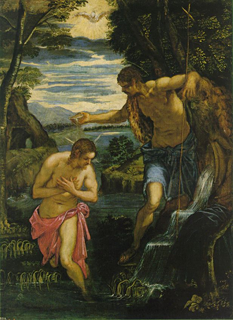Just who was Jacopo Robusti, alias Tintoretto? Something of a mystery, if his Self-Portrait of 1589 in the Louvre is anything to go by. Spotlit, isolated in circumambient darkness, he turns a melancholy crag of a face towards us. His eyes are bottomless black pools and there are heavy bags under them. A solemn greybeard with a droopy and somewhat walrus-like aspect, he seems to look through rather than at us.
The bags under his eyes, at least, are easily explained. When he painted this portrait of the artist as an old man Tintoretto had spent much of the preceding 15 years decorating the Scuola Grande di San Rocco - the meeting house of one of Venice’s many religious confraternities - with no fewer than fifty monumental canvases illustrating the stories of the Bible. The result of all his labour was one of the most ambitious and original cycles of painting in the history of Western art. A grand but rather cool building, designed in the opulent classical style which had only recently become fashionable in
Tintoretto was one of the great innovators. Taking the chiaroscuro pioneered by earlier Renaissance artists to new extremes, he created a new world of dramatically penumbral light effects, so that the holy events in his paintings seem to unfold in a universe crackling with spiritual electricity. The climactic work in the San Rocco cycle, and the principal painting in its albergo, or chief council chamber, is an enormous depiction of the Crucifixion forty feet wide. The artist seems to have taken as his text John 12:32-33: “And I, if I be lifted up from the...


